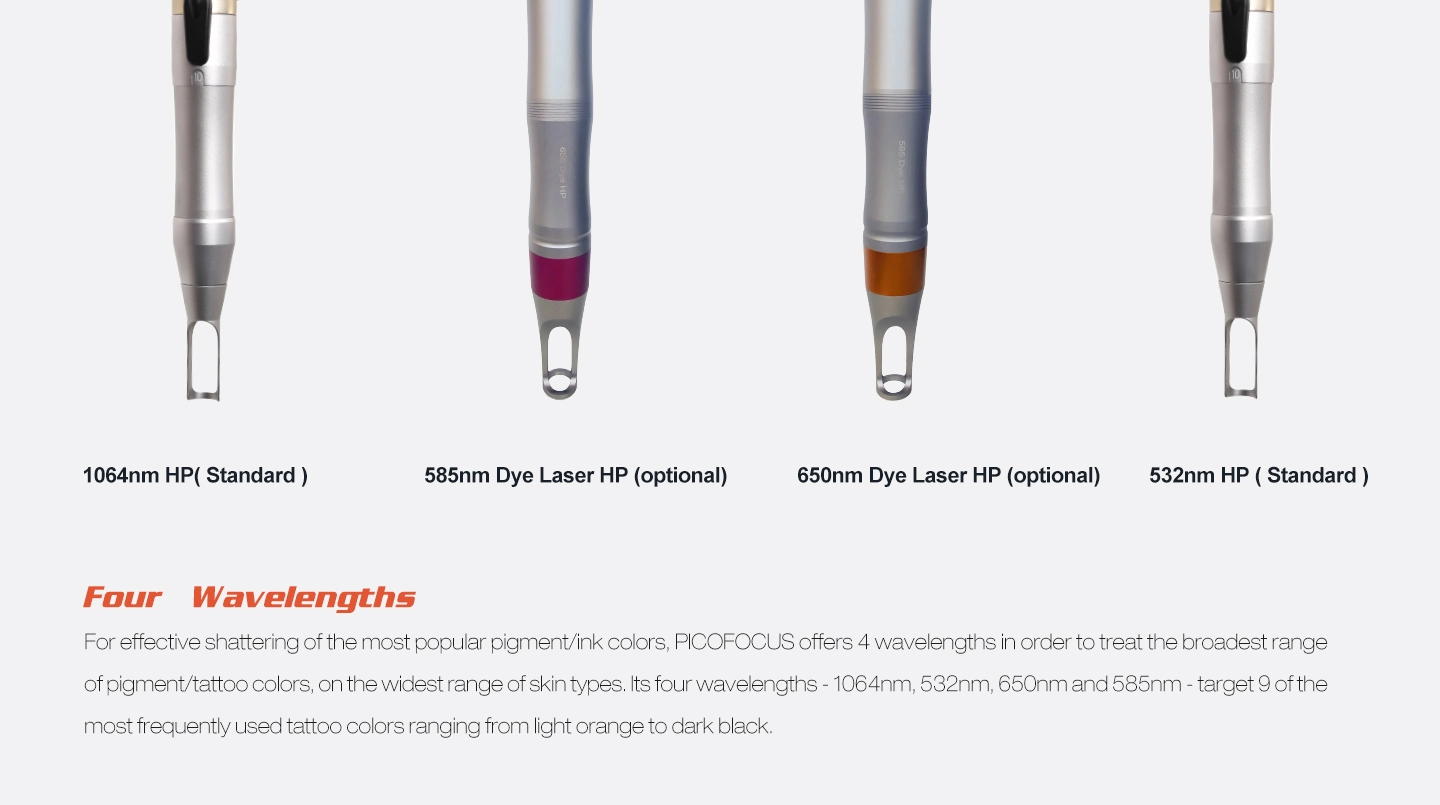Overview of Picosecond Laser Treatment
What is Picosecond Laser?
The Picosecond laser is a cutting-edge technology utilized in various dermatological treatments to improve skin health and appearance. Unlike traditional lasers, the Picosecond laser emits ultra-short pulse durations measured in picoseconds, making it exceptionally effective in targeting skin issues with minimal damage to surrounding tissues. This advanced mechanism allows for precise treatment of skin imperfections, promoting faster recovery and more refined results.
Principles and Mechanism
The Picosecond laser works by delivering high-energy bursts of light that penetrate the skin layers. These bursts create a photomechanical impact that shatters unwanted pigment particles into tiny fragments. This mechanism is particularly useful for procedures like tattoo removal, dark spot reduction, and acne scar treatment. The rapid pulse speeds generate minimal heat, minimizing the risk of thermal damage and promoting a quicker and more comfortable healing process.
NUBWAY is a reliable beauty equipment supplier that has been in operation since 2012. Located in the Shunyi District of Beijing, China, NUBWAY is a highly efficient manufacturing corporation that integrates research and development, production, sales, and training services. With over 50 R&D engineers and a large factory spanning over 30,000 square meters, NUBWAY is committed to delivering high-quality beauty equipment.

Common Uses of Picosecond Laser
Skincare and Dermatology Applications
Picosecond lasers are widely employed in skincare and dermatology due to their efficiency and precision. They are commonly used for removing tattoos, lightening dark spots, and treating acne scars. Additionally, they can improve skin texture, reduce wrinkles, and rejuvenate the skin by stimulating collagen production. This versatility makes Picosecond lasers a popular choice among individuals seeking to enhance their skin’s appearance.
Medical Treatments
Beyond cosmetic applications, Picosecond lasers find use in various medical treatments. This includes the removal of benign pigmented lesions, treatment of certain vascular conditions, and reducing the appearance of melasma. Dermatologists also use this technology to address skin conditions that may benefit from the precise application of high-energy light, making it an invaluable tool in the medical field.
Factors Influencing Recovery Time
Individual Skin Type
Sensitivity and Healing Rate
The recovery time following a Picosecond laser treatment can significantly vary based on an individual’s skin type. People with sensitive skin may experience more pronounced redness and swelling immediately after the procedure, which might extend the initial recovery phase. Conversely, individuals with resilient skin types tend to heal faster, with less noticeable side effects. The natural healing rate of the skin also plays a crucial role, as some people’s skin repairs itself more efficiently than others.
Treatment Area and Intensity
Differences in Skin Zones
The recovery time can also differ depending on the area of the skin being treated. For instance, the skin on the face is typically more delicate compared to other parts of the body, which may result in a slightly longer healing period. Areas that have been exposed to the sun extensively might also demonstrate a different recovery profile due to variations in skin thickness and damage levels.
Impact of Laser Strength
The intensity of the Picosecond laser settings used during treatment is another critical factor. Higher energy settings might be required for more stubborn issues like deep-seated tattoos or severe acne scars, which could lead to a more extended recovery period due to the increased disruption to the skin. Lower settings, on the other hand, generally result in quicker recovery times as the treatment is less invasive.
Post-Treatment Care
Recommended Practices for Quick Recovery
Post-treatment care is crucial for a swift and smooth recovery after a Picosecond laser procedure. Patients are typically advised to keep the treated area clean and moisturized to promote healing. Applying cool packs can help reduce swelling and discomfort in the hours immediately following the treatment. It is also essential to avoid sun exposure and use high-SPF sunscreen to protect the sensitive, healing skin from UV damage. Additionally, gentle skincare products that do not contain harsh chemicals can support the healing process.
Products to Avoid After Treatment
Certain products should be avoided after a Picosecond laser treatment to prevent irritation and complications. This includes exfoliating agents such as alpha-hydroxy acids (AHAs) and retinoids, as they can aggravate the treated skin and prolong the recovery period. Fragranced products are also recommended to be side-stepped due to their potential to cause allergic reactions on the sensitive skin post-treatment. Instead, focus on using mild, non-irritating products that soothe the skin.
Typical Recovery Timeline
Immediate Effects Post-Treatment
Redness and Swelling
Right after a Picosecond laser treatment, it is common to experience redness and swelling in the treated area. This is a natural response of the skin to the laser energy and typically subsides within a few hours to a couple of days. The severity of these immediate effects can vary depending on the individual’s skin sensitivity and the intensity of the treatment.
Expected Discomfort Levels
Slight discomfort or a tingling sensation in the treated area is also common immediately following the procedure. While pain levels are generally mild, some patients might experience a stinging sensation akin to a mild sunburn. This discomfort is usually temporary and can be alleviated with over-the-counter pain relievers or cool compresses.
Short-Term Healing Phases
First Few Days Symptoms
During the first few days post-treatment, the skin may feel tighter and more sensitive than usual. Some patients may notice minor flaking or peeling as the skin undergoes renewal. During this period, it is pivotal to adhere to a gentle skincare routine to support healing and avoid any products that might irritate the skin further.
Week 1 Progress
By the end of the first week, significant improvements are usually noticeable. Redness and swelling should have substantially reduced, and any initial discomfort would generally have dissipated. The skin begins to look more even and the early results of the treatment start to emerge. Continue to follow post-treatment care guidelines to aid in optimal recovery.
Long-Term Recovery Guidelines
Skin Healing Over Weeks
The skin continues to heal and improve over the following weeks. Collagen production initiated by the laser treatment helps in gradually enhancing skin texture and tone. Patients can expect to see progressive improvements in the appearance of any targeted pigmentation issues, such as dark spots or tattoos. Consistently adhering to post-treatment care recommendations plays a vital role in achieving the best possible outcomes.
Full Recovery Expectations
Full recovery from a Picosecond laser treatment, where the skin has completely healed and the final results are visible, can take several weeks to a few months. This duration can vary depending on the specific condition treated, the individual’s skin type, and how well post-treatment care is followed. Patients should remain patient and continue following professional advice to ensure the best recovery and results.
Tips for a Smooth Recovery Process
Do’s and Don’ts After Treatment
Beneficial Activities
Engaging in certain beneficial activities can promote a faster recovery. Keeping the treated area hydrated by drinking plenty of water and using recommended moisturizers can help the skin heal efficiently. Gentle facial exercises to maintain circulation without stressing the skin can also be advantageous. Additionally, wearing protective clothing and high-SPF sunscreen when outdoors can shield the healing skin from harmful UV rays, facilitating a smoother recovery.
Avoidable Actions
To streamline the recovery process, there are specific actions to avoid. Refrain from touching or scratching the treated area, as this can lead to irritation or infection. Avoid strenuous physical activities that cause excessive sweating because this can irritate the healing skin. Staying away from hot showers, saunas, and swimming pools with chlorinated water is also advisable, as these can dry out and worsen the treated area.
Professional Advice for Optimal Healing
Consultation with Dermatologists
Regular consultations with a dermatologist throughout the recovery phase are essential for optimal healing. Dermatologists can provide personalized advice and adjust post-treatment care routines based on the progress of your recovery. They can also address any concerns or complications that may arise, ensuring that the healing process stays on track.
Monitoring and Follow-Up Sessions
Scheduling follow-up sessions as recommended by your dermatologist is crucial. These sessions allow the professional to monitor your skin’s healing progress, make necessary adjustments to treatment plans, and ensure that all your questions are answered. Consistent follow-up helps in achieving the best possible results from your Picosecond laser treatment and maintaining long-term skin health.
With the right care and patience, recovery from Picosecond laser treatment can be a smooth and rewarding process, leading to significantly improved skin health and appearance.
NUBWAY‘s commitment to research and development is evident in their professional R&D team. With rich experience and profound industry knowledge, this first-class team ensures industry-leading efficiency in product development. They also offer professional services, including OEM/ODM, to support customization demands.





